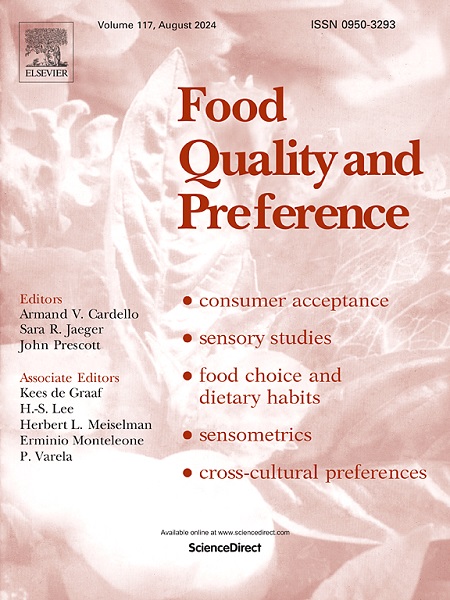Consumers' perceptions of plant-based alternatives relative to the foods they directly imitate
IF 4.9
1区 农林科学
Q1 FOOD SCIENCE & TECHNOLOGY
引用次数: 0
Abstract
Plant-based alternatives (PBAs) that look and taste like animal-derived products have developed rapidly in recent years in response to growing interest in sustainable alternatives. However, PBAs face challenges meeting consumer expectations and mimicking the sensory profile of animal-derived products. Thus, consumers generally view PBAs as a separate category rather than animal-derived alternatives. The objective of this study was to characterize how consumers perceive PBAs (meat and dairy) and compare them to the animal-derived products they imitate. A total of 271 adults completed an online questionnaire, where they viewed food images (PBA, animal-derived and control products), reported expected tastiness, purchase intention, and endorsed descriptors using check-all-that-apply. Person-related factors influencing PBA perception were also assessed. PBAs were rated significantly lower in expected tastiness and purchase intention. Correspondence analysis confirmed that PBAs were perceived as distinct from their AD counterparts, and that PBAs were associated with the terms unnatural, eco-friendly, modern, adventurous, expensive, and bland, while animal-derived products largely separated by perceived healthiness. A penalty-lift analysis revealed that processed, unnatural, and bland were the top drivers of low PBA purchase intention. Furthermore, participants' trust in the food industry (positively) and food technology neophobia (negatively) predicted PBA acceptance. Together, this study confirms perceived taste as a PBA adoption barrier while also identifying unnaturalness and fear of food technology as important challenges. In addition to pursuing taste improvements, PBA developers should consider strategies to address the unnatural and processed perception of these products.
求助全文
约1分钟内获得全文
求助全文
来源期刊

Food Quality and Preference
工程技术-食品科技
CiteScore
10.40
自引率
15.10%
发文量
263
审稿时长
38 days
期刊介绍:
Food Quality and Preference is a journal devoted to sensory, consumer and behavioural research in food and non-food products. It publishes original research, critical reviews, and short communications in sensory and consumer science, and sensometrics. In addition, the journal publishes special invited issues on important timely topics and from relevant conferences. These are aimed at bridging the gap between research and application, bringing together authors and readers in consumer and market research, sensory science, sensometrics and sensory evaluation, nutrition and food choice, as well as food research, product development and sensory quality assurance. Submissions to Food Quality and Preference are limited to papers that include some form of human measurement; papers that are limited to physical/chemical measures or the routine application of sensory, consumer or econometric analysis will not be considered unless they specifically make a novel scientific contribution in line with the journal''s coverage as outlined below.
 求助内容:
求助内容: 应助结果提醒方式:
应助结果提醒方式:


